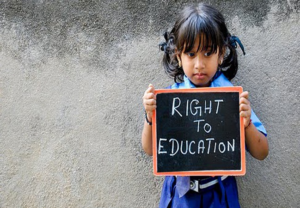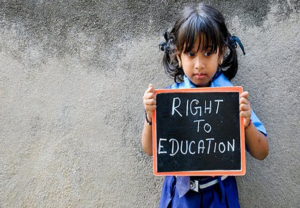
Gujarat Shikshan Seva Varg 2 Material : On account of division of the then directorate of Education on office of Director of Education (Primary and Adult) has come into existence. Since 9-10-1976. Then on account of division of office of the director of Education (Primary and Adult) the office of the Director of Primary Education came into existence since 1-12-1986.
Gujarat Shikshan Seva Varg 2 Material | RTE 2009 Rules
The Right to Education Act 2009, also known as the RTE Act 2009, was enacted by the Parliament of India on 4 August 2009. It describes modalities of the importance of free and compulsory education for children aged between 6-14 years in India under Article 21 (A) of the Constitution of India. This act came into effect on 1 April 2010 and made India one of the 135 countries to have made education a fundamental right for every child.
It prescribes minimum norms for elementary schools, prohibits unrecognised schools from practice and advocates against donation fees and interviews of children at the time of admission. The Right to Education Act keeps a check on all neighbourhoods through regular surveys and identifies children who are eligible for receiving education but do not have the means to.
Educational challenges have been prevalent at both the centre and states for many years in India. The Right to Education Act 2009 maps out roles and responsibilities for the centre, state and all local bodies to rectify gaps in their education system in order to enhance the quality of education in the country.
Gujarat Shikshan Seva Varg 2 Material | RTE 2009 Rules
It is obligatory for the Government to provide free and compulsory elementary education to each and every child, in a neighbourhood school within 1 km, up to class 8 in India. No child is liable to pay fees or any other charges that may prevent him or her from pursuing and completing elementary education. Free education also includes the provisions of textbooks, uniforms, stationery items and special educational material for children with disabilities in order to reduce the burden of school expenses.
In 2013, Oxfam India critiqued Right to Education (RTE) Forum’s Stocktaking Report 2013, which evaluated the three year progress of the Right to Education Act since its enactment in 2009. While considerable progress was made on aspects like primary level enrolment rates, launching new schools, appointment of new teachers and ensuring safe drinking water and toilet facilities for children, the overall delivery did not live up to the expectations. Oxfam India in its policy brief recommended five solutions to rectify gaps and loopholes in order to enhance implementation and effectiveness of the Right to Education Act 2009.
With a view to implementing the policy effectively as determined by the state Govt. in regard to primary education the instructions and guidance as required are imparted by the Directorate of Primary Education at the state level. Various programs of primary education reforms are implemented through District Primary Education officers the statement showing administrative set-up of Directorate of primary education is as under.
Gujarat Shikshan Seva Varg 2 Material | RTE 2009 Rules
he Right to Education Act lays down norms and standards relating to Pupil-Teacher-Ratios (number of children per teacher), classrooms, separate toilets for girls and boys, drinking water facility, number of school-working days, working hours of teachers, etc. Each and every elementary school (Primary school + Middle School) in India has to comply with these set of norms to maintain a minimum standard set by the Right to Education Act.
The Right to Education Act provides for rational deployment of teachers by ensuring that the specified Pupil-Teacher-Ratio is maintained in every school with no urban-rural imbalance whatsoever. It also mandates appointing appropriately trained teachers i.e. teachers with the requisite entry and academic qualifications.
In 2018, Oxfam India analysed the nine year progress of the Right to Education Act since its enactment in 2009. The observations highlighted significant lack of allocation of resources to education in general and elementary schools. This was far from satisfactory and needed immediate amends in order to improve overall learning outcomes of children. Oxfam India in its policy brief recommended seven ways to address this problem.
Gujarat Shikshan Seva Varg 2 Material | RTE 2009 Rules
The Right to Education Act 2009 prohibits all kinds of physical punishment and mental harassment, discrimination based on gender, caste, class and religion, screening procedures for admission of children capitation fee, private tuition centres, and functioning of unrecognised schools.
The Right to Education (RTE) Forum’s Stocktaking Report 2014 suggested that across the country, less than 10 percent schools comply with all of the Right to Education Act norms and standards. While enactment of the Right to Education Act 2009 triggered significant improvements, concerns regarding privatisation of education remains. Educational inequalities have held a strong ground in India for many years.
While the Right to Education Act offers the first step towards an inclusive educational system in India, effective implementation of the same still remains to be a challenge. Oxfam India in its policy brief suggested several ways to improve implementation of the Right to Education Act 2009.
Gujarat Shikshan Seva Varg 2 Material | RTE 2009 Rules
Important Links :
